Bayerische Akademie der Wissenschaften (editor)
Die unbekannte Welt der Mikrobiome
Rundgespräche Forum Ökologie Bd. 47
Rundgespräch am 10. April 2018 in München
2019. [in German] – 144 pp., 51 coloured and black-and-white figures, 3 tables
24 x 17 cm. Paperback
ISBN: 978-3-89937-239-7
Series: Rundgespräche Forum Ökologie
Organization:
Prof. Dr. med.vet. Johann Bauer
Prof. Dr. med. Erika von Mutius
You must be logged in to post a review.
Alle Organismen benutzen in irgendeiner Weise Moleküle als Signale, um Information auszutauschen. Diese »chemischen Sprachen« sind die älteste Form der Kommunikation in der Natur. Die Chemische Ökologie als eigenständige interdisziplinäre Forschungsrichtung befasst sich unter anderem mit der Identifizierung dieser Signale, mit der Aufklärung von Systemen zu ihrer Wahrnehmung und Weiterleitung in die Zelle bzw. in den Organismus, aber auch mit den Wirkungen der Signale auf die Evolution, das Verhalten und die Ökologie der beteiligten Organismen. Das vorliegende Buch gewährt neue und überraschende Ergebnisse aus diesem faszinierenden Forschungsfeld.
Die einzelnen Kapitel stellen spannende Beispiele chemischer Kommunikation vor, sowohl hinsichtlich der Vielfalt der Lebewesen – über Höhere Pflanzen, Grünalgen, Insekten, Schwämme, Pilze und Bakterien wird berichtet – als auch der Vielfalt der Interaktionen, die durch chemische Stoffe vermittelt werden, vom symbiontischen Zusammenleben bis zur komplexen Abwehr von Fraßfeinden. Darüber hinaus werden wichtige Methoden vorgestellt, die heute in der Chemischen Ökologie eine Rolle spielen.
Der Band enthält die überarbeiteten Vorträge und Diskussionen einer gleichnamigen Fachtagung, ergänzt mit einem Schlagwort- und einem Artenverzeichnis. Er richtet sich gleichermaßen an Fachleute wie an interessierte Laien.
Organisator des Rundgesprächs: Prof. Dr. Markus RIEDERER
Mit Beiträgen von: Prof. Dr. Ute HENTSCHEL HUMEIDA, Dr. Ulrich HILDEBRANDT, Prof. Dr. Monika HILKER, Prof. Dr. Kirsten JUNG, Prof. Dr. Erika KOTHE, Priv.-Doz. Dr. Axel MITHÖFER, Prof. Dr. Caroline MÜLLER, Prof. Dr. Martin PARNISKE, Prof. Dr. Markus RIEDERER, Prof. Dr. Joachim RUTHER und Dr. Thomas WICHARD.
Vorwort 5
Begrüßung durch den Präsidenten der Bayerischen Akademie der Wissenschaften 7
Begrüßung durch die Vorsitzende des Forums Ökologie 9
Johann Bauer: Die unbekannte Welt der Mikrobiome. Einführung in das Rundgespräch 11
Michael Wagner: Mikrobiome – Wissensstand und Perspektiven 17
Diskussion 28
Rudolf Amann: Das Frühjahrsmikrobiom der südlichen Nordsee: Bacterioplankton-Sukzessionen und bakterielle Polysaccharidverwertung in einem Küstenmeer 31
Diskussion 42
Tillmann Lüders: Aquatische Mikrobiome und ihre Bedeutung für die Wasserqualität 45
Diskussion 56
Michael Schloter: Mikrobiome als Katalysatoren von Ökosystemdienstleistungen des Bodens 57
Diskussion 69
Gabriele Berg: Pflanzenmikrobiome: verborgene Netzwerke für die Gesundheit 71
Diskussion 79
Thomas Clavel: Das Darmmikrobiom von Tieren: Warum Mäuse und Schweine sich um ihr Mikrobiom Sorgen machen sollten 81
Diskussion 89
Charles James Newbold and Eva Ramos-Morales: Microbiome of the rumen 91
Diskussion 100
Dirk Haller: Mikrobiom-Signaturen und ihre funktionale Bedeutung in der Medizin 101
Diskussion 109
Simone Herp und Bärbel Stecher: Minimalismus: Wie uns einfache Modellsysteme helfen, Funktionen des Darmmikrobioms zu verstehen 111
Diskussion 119
Erika von Mutius: Die Rolle des Umweltmikrobioms in der Asthma- und Allergieentstehung 121
Diskussion 129
Zusammenfassung des Rundgesprächs 131
Verzeichnis der Organismen (gruppen) 135
Schlagwortverzeichnis 138
Verzeichnis der Vortragenden und Diskussionsteilnehmer am Rundgespräch 143
Bauer
[pp. 11-15, 3 black-and-white figures]
no Abstract
Microbiomes: state of knowledge and perspectives
Michael Wagner
[pp. 17-27, 6 coloured figures 1 table]
We live on a microbial planet. Archaea and Bacteria were the first organisms colonizing our planet and have lived there alone for many hundreds of millions of years. The biodiversity of these tiny little creatures by far exceeds those of all other life forms, and life on Earth would not be possible without their activity. Microbial communities colonize all ecosystems, plants, animals, and humans. Understanding the structure and function of these communities is the overarching goal of microbiome research. The development and application of molecular methods, ranging from the 16S rRNA gene approach to meta-omics technologies, have revolutionized our understanding of the tree of life. Single-cell techniques like Raman-microspectroscopy now allow researchers to study the function of individual microbial cells within their natural ecosystems. For example, the application of these methods have dramatically changed our perception of the key players and their physiologies in the global biogeochemical nitrogen cycle. Surprisingly, nitrifiers can use several other substrates than urea, ammonia and nitrite, and nitrite-oxidizers can initiate nitrification. The complete nitrifiers (comammox) recently discovered by my research group are able to metabolize ammonium directly to nitrate. We are currently investigating to what extent comammox contribute to the nitrification in natural and engineered ecosystems and how abundant they are in the environment.
The microbiome of the southern North Sea in spring:
succession of bacterioplancton and bacterial polysaccharide utilization in coastal waters
Rudolf Amann
[pp. 31-41, 6 coloured and 1 black-and-white figure]
In the oceans, microbes are the central catalysts of important biogeochemical cycles. A major part of the carbon dioxide fixed by the photosynthesis of microalgae upon their decay is mineralized by heterotrophic bacteria, with complex interactions between the phytoplankton and the bacterioplancton. In a long-term project, we are investigating the microbiome of the southern North Sea by both cultivation and cultivation-independent methods. The comparative sequencing of phylogenetic markers, such as the 16S rRNA genes, revealed thousands of bacterial species. By fluorescence in situ hybridization and metagenomics, we could identify a substrate-induced annual succession of bacteria from the taxa Bacteroidetes and Gammaproteobacteria that bloom following the collapse of the spring phytoplankton bloom. These taxa rapidly degrade the biomass, which consists mainly of polysaccharides. The comparative analysis of Bacteroidetes genomes revealed polysaccharide utilization loci (PULs) that encode the binding, transport and degradation of polysaccharides such as laminarin, the central storage compound of diatoms. Comparative genome and metagenome studies are now indicating that only a few species of Bacteroidetes with defined PULs have specialized for the efficient utilization of the abundant algal polysaccharides. The occurrence of these species follows deterministic patterns similar to those known from gut microbiomes.
Aquatic microbiomes and their importance for water quality
Tillmann Lüders
[pp. 45-56, 7 coloured and 1 black-and-white figure]
Aquatic microbiomes make vital contributions to the regulation of freshwater quality, by cycling of nutrients and degradation of pollutants. In particular, groundwater is of considerable importance for our drinking water supply and also as resource. The systematic investigation of groundwater systems as a microbial habitat, however, has only recently been initiated. A better understanding of these microbiomes may provide solutions for current problems in our drinking water supply, such as increasing pollution with nitrate and the spread of micropollutants. Even at sites highly contaminated with hydrocarbons, environmental microbiology has provided surprising new insights into the control of degradation processes and anaerobic microbiomes. As an example, cable bacteria can spatially uncouple redox processes at the fringes of contaminant plumes via long-distance electron transfer, and thus alleviate central reactivity limitations. We are also currently investigating massive biofilms discovered in the cavern of a former medicinal iodine spring. This revealed that even the shallow terrestrial subsurface – analogous to the hot chimneys of the deep sea – can host biosphere-independent and surprisingly diverse microbiomes, purely based on microbial autotrophy. In summary, the extraordinary importance of understanding aquatic micorbiomes for the protection and sustainable use of our ground and drinking water resources is highlighted.
Microbiomes as catalysts for soil ecosystem services
Michael Schloter
[pp. 57-68, 7 coloured figures]
The soil microbiome plays a very important role as driver for ecosystem services, including plant growth, structure formation, carbon sequestration, and degradation of pollutants. However, soils may also harbor a number of potential human pathogens that in some cases may even reproduce in the soil. As a result of the huge biodiversity in soils, studies have suggested a high functional resilience towards stressors, at least at the genetic level. Agricultural management thus mostly affects gene transcription and expression pattern of selected enzymes, as shown in this paper using the examples of the phosphorus cycle, the synthesis of exo- and lipopolysaccharides, and the anaerobic degradation of alkenes. To develop targeted management strategies for the future, it will be essential to understand the “regulom” of soils, which describes the regulation pattern for gene activation. To do so, we need an improved understanding of the temporal dynamics and the spatial heterogeneity of processes and microbes at small scales.
Plant microbiomes: hidden networks for plant and animal health
Gabriele Berg
[pp. 71-78, 6 coloured figures]
In the last decade, an immense microbial biodiversity associated with plants has been revealed, and plants are now considered as meta-organisms or holobionts. The holobiont is characterized by an intense structural and functional interplay of all partners driven by co-evolution. The microbiome is crucial for important functions, including plant growth, plant health, and even suitability for human nutrition. Recently, the transmission of a core microbiome from one generation to the other (vertical transfer) has been discovered. Seeds are the carriers in this context, especially for microbes with positive effects on the plant. Breeding appears to change plant microbiomes, with a loss of taxonomic diversity of the microbiome of cultivated plants compared to the wild plants. These new insights have substantial implications for applied fields. For example, if breeding strategies included the plant microbiome, the susceptibility of economic plants towards agricultural important pathogens might be reduced. Therefore, we need new strategies to maintain and protect the plant- and seed-associated microbial diversity.
The gut microbiome of animals: why mice and pigs should worry about their microbiomes
Thomas Clavel
[pp. 81-88, 2 coloured figures]
The gut microbiome of humans and other mammals is important for their health, e.g., by stimulating the immune system, degrading food compounds, and protecting against pathogens. The gut microbiota can also affect animal growth in farming. In biomedical research, mouse and pig models allow performing mechanistic studies that help understanding the molecular mechanisms that underlie microbe-host interactions. However, scientific findings can vary substantially from one laboratory to another, depending on microbial colonization, and many of the microorganisms in the guts of mice and pigs are still unknown. Therefore, we are studying their microbiomes intensively with anaerobic cultivation techniques. In mice, we were able to describe 15 new species within the Mouse Intestinal Bacterial Collection (www.dsmz.de/miBC). Nonetheless, despite numerous advantages of mouse models, mice differ substantially from human with respect to their gut physiology and nutrition. Pig models are therefore more suitable for studying complex and long-term diseases, such as colorectal cancer. My working group is especially interested in gut bacteria that metabolize bile acids to study their role in carcinogenesis. Such studies may in the future be helped by the design and use of defined mixtures of cultured gut bacteria (“minimal microbiomes”).
Microbiome of the rumen
Charles James Newbold and Eva Ramos-Morales
[pp. 91-99, 2 coloured and 1 black-and-white figure, 1 table]
The rumen plays a central role in the ability of ruminants to digest cellulose and thereby produce human-edible food from resources that would otherwise not be available for our consumption. Significant progress has been made to culture and characterize bacteria and archaea from the rumen, and molecular techniques allow quantitative and qualitative studies on microbial populations. Up to now, rumen protozoa cannot be maintained in axenic culture, but techniques to clone and express ciliate genes in phages have allowed genes from a range of rumen protozoa to be characterized. However, ultimately, we are still ignorant about the roles and activities of much of the rumen microbial ecosystem. The animal’s diet is the most obvious factor influencing the rumen microbiome. Due to their antimicrobial activities, plant extracts and plant secondary compounds (e.g. saponins, essential oils and polyphenolic compounds) have shown potential to manipulate rumen fermentation in terms of decreasing greenhouse gas emissions and improving the efficiency of nitrogen utilization. In addition, the host itself might influence the rumen microbial population, both as a heritable trait and through the effect of early life nutrition on microbial population structure and function in adult ruminants. Enhanced studies that consider not only which microbes are present in the rumen but also the functional genes present (metagenomics) and their expression in the rumen (metatranscriptomics) promise to provide new insights into rumen function and how it might be manipulated to the benefit of mankind.
Minimalism: how simple model systems help us to understand the functions of the gut microbiome
Simone Herp und Bärbel Stecher
[pp. 111-118, 4 coloured figures]
A complex community of bacteria, the microbiota, colonizes the intestine of healthy individuals. These bacteria are essential for a balanced maturation of the immune system, synthesis of vitamins and other metabolites and the digestion of food. Our microbiota also protects us from invading pathogens, such as Salmonella enterica, Clostridium difficile or pathogenic E. coli. Although there is substantial variation among unrelated healthy individuals in the composition of their microbiota, human microbiome-wide association studies (MWAS) have revealed that protection against infectious diseases can be associated with the enrichment of particular microbial taxa. For most microorganisms of a gastrointestinal ecosystem, however, a causal relationship between presence and protection against disease remains to be shown. To address causation in colonization resistance, we established a gnotobiotic mouse model with 12 bacterial species that represent a normal murine gut microbiota. Each bacterium species can be cultivated, and thorough characterization is thus possible. This model microbiota can be used for studying the influence of individual bacterial species on a multitude of disease models and helps us to identify protective bacteria and mechanisms in the gut. For example, in interaction with these 12 species, E. coli protects against Salmonella enterica ser. Typhimurium. Further, Clostridium scindens, a species that produces secondary bile acids, protects against Clostridium difficile.
The environmental microbiome and the development of asthma and allergy
Erika von Mutius
[pp. 121-128, 3 coloured and 1 black-and-white figure]
The prevalence of asthma and allergic diseases is significantly lower among children raised on traditional farms as compared to non-farm children. One important protective exposure is the child’s stay in cowsheds, which amounts to exposure to a rich microbial environment. The protective effect starts early in life, when infants are taken into cowsheds. In such circumstances, the risk of developing asthma-like symptoms is reduced by more than half in a dose-dependent manner as compared to non-exposed infants. Subsequently we have shown that the diversity of the environmental microbiome is a strong determinant of asthma protection. Although we could not identify the necessary components within this microbiome with certainty, we know that not one microbe alone, but most likely a cocktail of different microbes provides the protection. The exact composition of this cocktail remains to be explored by means of experimental studies. However, we have shown that the environmental microbiome influences the human microbiome in the nose and pharynx, and that changes of the nasal microbiome in part mediate the farm effect on asthma.
Hoch divers und unverzichtbar: Mikroorganismen sind tragende Säulen des Lebens auf der Erde. Im Laufe von Milliarden von Jahren sind sie in jede nur erreichbare Nische unseres Planeten eingedrungen und beeinflussten Ozeane und Atmosphäre, sodass mehrzelliges Leben möglich wurde. Erst in den letzten Jahrzehnten ist es mithilfe moderner Techniken gelungen, tiefer in den Mikrokosmos einzudringen und die Diversität mikrobieller Gemeinschaften (z.B. von Bakterien, Archaeen, Pilzen und Protozoen) unterschiedlicher Habitate (Wasser, Boden, Pflanze, Tier, Mensch) zu analysieren. Dabei kristallisiert sich nach und nach die fundamentale Bedeutung der Mikrobiome für das jeweilige Ökosystem bzw. den jeweiligen Wirt heraus. Bei Vertebraten spielen Mikrobiome beispielsweise eine tragende Rolle beim Aufschluss der Nahrung, beim Wachstum oder bei der Entwicklung von Organen, bei der Reifung des Immunsystems und bei der Abwehr pathogener Mikroorganismen.
In dem vorliegenden Buch geben Wissenschaftlerinnen und Wissenschaftler Einblick in ihre Forschungsarbeiten und bringen uns so die spannende Welt mikrobieller Lebensgemeinschaften nahe. Sie stellen die immens hohe mikrobielle Diversität vor und richten dabei den Fokus auch auf deren funktionale Bedeutung im jeweiligen Habitat bzw. Wirt sowie auf ihre Rolle bei wichtigen ökologischen oder medizinischen Themen. Die Freisetzung von CO2 durch Meeresmikroben, die sich von Algen ernähren, oder von anderen klimawirksamen Gasen aus dem Pansen von Wiederkäuern wird ebenso angesprochen wie die Bedeutung des Mikrobioms beim Abbau von Schadstofffahnen in Grundwasserleitern und im Boden; das Mikrobiom, das die Pflanzengesundheit stärkt, ebenso wie das künstliche Minimal-Mikrobiom, das uns Menschen vor Infektionen schützen soll, oder das Umweltmikrobiom, das eine Rolle bei der Entstehung von Asthma und Allergien spielt.
Der vorliegende Band enthält die überarbeiteten Vorträge und Diskussionen der Fachtagung »Unbekannte Welt der Mikrobiome« im April 2018, ergänzt mit einer Zusammenfassung und zwei Registern.
Unser Dank gilt allen, die zum Gelingen des Buches beigetragen haben. Besonders danken wir den Referentinnen und Referenten des Rundgesprächs für ihre Vorträge und die anschließende Ausarbeitung der schriftlichen Beiträge, der wissenschaftlichen Mitarbeiterin des Forums Ökologie, Frau Claudia Deigele, für die Erstellung der Transkripte und die umfangreichen Redaktionsarbeiten und Herrn Hubert Hilpert, der den Band im Verlag Dr. Friedrich Pfeil fachkundig betreut hat.
München, im Dezember 2018
Johann Bauer, Erika von Mutius (Organisatoren des Rundgesprächs)
Susanne S. Renner (Vorsitzende des Forums Ökologie)
Verzeichnis der Vortragenden (*) und der Diskussionsteilnehmer am Rundgespräch
* Amann, Rudolf, Prof. Dr., Max-Planck-Institut für Marine Mikrobiologie, Abteilung Molekulare Ökologie, Bremen
* Bauer, Johann, Prof. i.R. Dr. med.vet. Dr. h.c., Technische Universität München, Lehrstuhl für Tierhygiene, Freising
* Berg, Gabriele, Prof. Dr., Technische Universität Graz, Institut für Umweltbiotechnologie, Graz, Österreich
* Clavel, Thomas, Prof. Dr., Uniklinik RWTH Aachen, Institut für Medizinische Mikrobiologie, Aachen
Freier, Korbinian, Dr., Bayerisches Landesamt für Umwelt, Augsburg
Gebauer, Gerhard, Prof. Dr., Universität Bayreuth, Labor für Isotopen-Biogeochemie, BayCEER,
Grill, Erwin, Prof. Dr., Technische Universität München, Lehrstuhl für Botanik, Freising
Gschlößl, Tanja, Prof. Dr., Bayerisches Staatsministerium für Umwelt und Verbraucherschutz, Referat 76: Klimapolitik, Klimaforschung, München.
* Haller, Dirk, Prof. Dr., Technische Universität München, Lehrstuhl für Ernährung und Immunologie, ZIEL Institute for Food & Health, Freising
Höllmann, Thomas O., Prof. Dr. phil., Präsident der Bayerischen Akademie der Wissenschaften, München
Hölzel, Christina, Prof. Dr. med.vet., Christian-Albrechts-Universität zu Kiel, Institut für Tierzucht und Tierhaltung, Kiel
Hoppe, Brigitte, Prof. Dr., München
* Lüders, Tillmann, Priv.-Doz. Dr., Helmholtz Zentrum München, Institut für Grundwasserökologie, Neuherberg. Ab April 2019: Universität Bayreuth, Lehrstuhl für Ökologische Mikrobiologie, Bayreuth.
Matern, Mine, Prof. Dr., Sachverständige für Lebensmittel, München
Merrow, Martha, Prof. Dr., Ludwig-Maximilians-Universität München, Institut für Medizinische Psychologie, München
Müller, Martin, Dr., Bayerische Landesanstalt für Landwirtschaft, Freising
Neuhaus, Klaus, Priv.-Doz. Dr., Technische Universität München, ZIEL Institute für Food & Health, Core Facility Mikrobiom, Freising
* Newbold, Charles James, Prof. Dr., Scotland’s Rural College (SRUC), Gut Microbiology Lab, Großbritannien
Rauwolf, Andreas, Gymnasium Olching, Olching
Renner, Susanne S., Prof. Dr., Ludwig-Maximilians-Universität München, Systematische Botanik und Mykologie, München
Reuter, Andreas, Dr., Gymnasium Alexandrinum Coburg, Coburg
Schleifer, Karl-Heinz, Prof. Dr., Unterschleißheim
* Schloter, Michael, Prof. Dr., Helmholtz Zentrum München, Abteilung für vergleichende Mikrobiomanalysen (CoMi), Neuherberg
* Stecher-Letsch, Bärbel, Prof. Dr., Ludwig-Maximilians-Universität München, Max-von-Pettenkofer-Institut, Lehrstuhl für Medizinische Mikrobiologie und Krankenhaushygiene, München
Tanner, Widmar, Prof. Dr., Regensburg
* von Mutius, Erika, Prof. Dr. med. Dr. h.c., Dr. von Haunersches Kinderspital, Kinderklinik und Kinderpoliklinik der Ludwig-Maximilians-Universität München, München
* Wagner, Michael, Prof. Dr. Dr. h.c., Universität Wien, Department für Mikrobiologie und Ökosystemforschung, Österreich
Wurzbacher, Christian, Dr., Technische Universität München, Lehrstuhl für Siedlungswasserwirtschaft, Garching
"*" indicates required fields
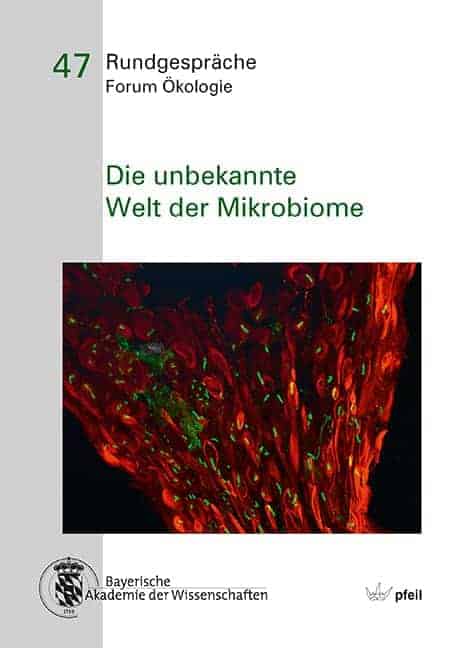
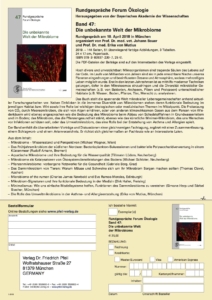
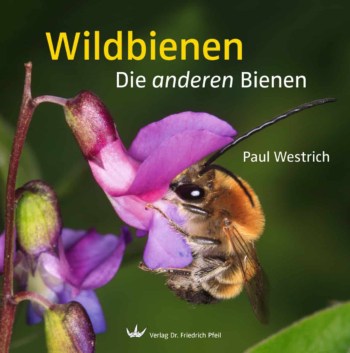
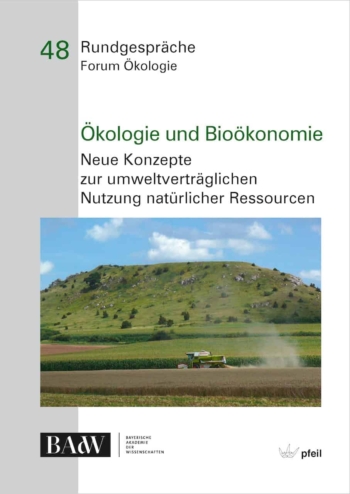
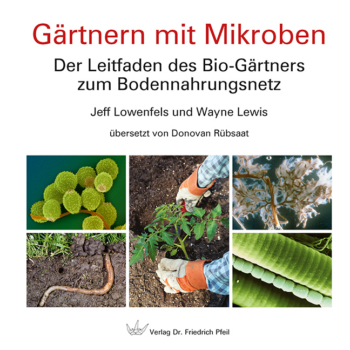
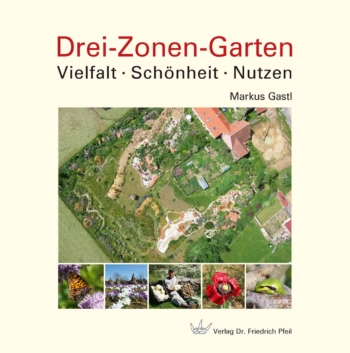
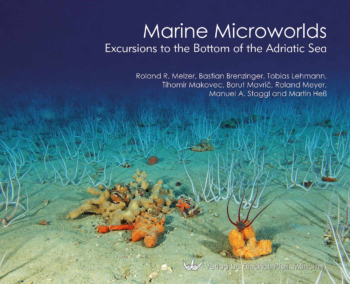
Reviews
There are no reviews yet.